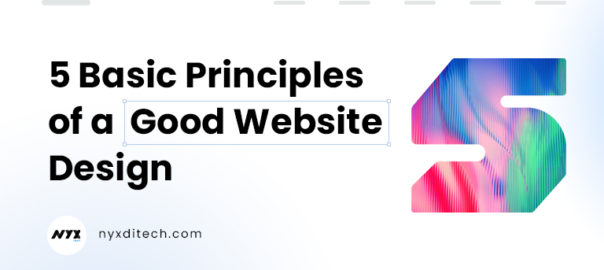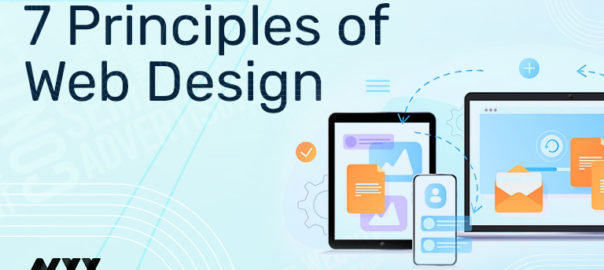It is now quite simple to design an appealing website. Simply join up for one of the numerous free website builders, and you’ll have a clean web design and an appealing-looking site in minutes. However, although a website may seem appealing, it may be ineffective in functionality and suitability for the user’s requirements.
Generic, non-tailored websites that aren’t created with your specific end-user in mind are the polar opposite of good web design. Users and their interactions with a website define effective web design. An effective website design should accomplish its intended function by communicating its precise message to the visitor while also engaging the viewer in the process.
When designing a website, there are various important factors to consider that will impact how the website is perceived. Having a well-designed website may aid in the creation of trust and the conversion of visitors into paying customers. It is essential to ensure that your website design is optimized for usability and straightforward to use to provide a positive user experience.
With our top seven web design principles, you can ensure that your website makes the correct impression on your consumers.
1. A Clear Purpose Sets The Foundation
Every well-designed website meets the demands of its visitors. And having an apparent objective and purpose is the most excellent approach to creating a website that appeals to consumers. You should not make up a web design as you go along as a purpose will provide you with a clear strategy and drive your design and content production.
When identifying the goal of a website, knowing who your audience is and what information they want to receive is critical, and how will your website provide that information is essential to its success. The demographics and problems of your target audience might assist you in steering your website down the right road.
Websites that are overcrowded and over-designed do not operate. When there are too many items on a single page, it causes attention and confusion. An excellent web design is not just clean and simple, but it is also purposeful and made to match exactly what the user wants.
2. Hierarchical Visual Representation
What do you want your visitors to notice? Simply said, the goal at hand is to organize the material. Users have no idea where their emphasis should be on poorly designed sites since every feature shouts for attention. Website designers should consider piquing their audience’s interest and effectively accomplish this impact as a general guideline.
Building the design on the F-pattern – where a reader scans a page vertically followed by horizontally (e.g., as with Google search results) – or the Z-pattern – where a reader scans the header from left to right, reads the text in the bottom left, and looks for the ‘Register Now’ or ‘Sign Up Now’ button in the bottom right – are two valuable tips. Designers experiment with more granular features such as font size, typeface, spacing pattern, and the usage of white space to get the desired impact.
3. Readability & Typography
Typography is a container for expressions. The forms and stylization of letters, in addition to the actual words, communicate meaning. Typography functions similarly to a decoder ring, converting an author’s thoughts into a visual representation.
Fonts should complement both the location and tone of a design. Cursive fonts are helpful for headlines and ornamental reasons, but they are inconvenient for vast blocks of text. The ideal font size for ease of online reading is 16px, and you should keep your design as simple as possible by utilizing no more than three typefaces in no more than three-point sizes.
Traditional fonts and those with more personality have a place in a design. A simple typeface is excellent for huge blocks of material and other significant information since it is easier to read. Stylized typography should be viewed as a potent spice that adds a little flavor to the site.
4. Content Gives Meaning
Quality content is helpful, clear, and directs your readers to the activities you want them to do. SEO should be taken into consideration and included into the content. SEO may be done intentionally and tastefully by using a conversational tone and having keywords and phrases that do not distract from your content.
Defining the objective of your site helps explain the material you need, and using a content-first approach means working with actual content from the start of the design process. If the information is accurate throughout, it is easier to identify modifications that need to be made along the way, rather than drowning in tweaks and overhauls at the conclusion of the journey. Deliver quality content that matches your audience’s demands.
5. Quick Load Time
Even if every component of your site has a function, it is effectively worthless to the user if it takes too long to load. The difficulty is that in our age of limited time and many options, if a website doesn’t load very immediately, very few visitors will stay around to wait.
Fortunately, designers and website owners may utilize no tools and tactics to optimize their sites’ loading speed to fulfill these customer expectations.
Some of the most effective ways for increasing website load times include optimizing image sizes, condensing code into a single CSS or JavaScript file, and minifying HTML, CSS, and JavaScript. Improving speed and performance is a continuous experiment, so use Google PageSpeed Checker to monitor any changes you make.
6. Mobile Compatibility
Because it is becoming more popular for people to access websites via various devices with varied screen sizes, it is vital to determine whether your website is mobile-friendly. If your website is not mobile-friendly, you have two options: rebuild it in a responsive style (which means it will respond to changing screen sizes) or construct a new mobile site entirely (a different website explicitly optimized for mobile users).
Making your website mobile-friendly is becoming more critical due to the rising popularity of smartphones, tablets, and even phablets (handheld computers).
There are a variety of web design studios or service locations where you may get your desktop design converted into a responsive and adaptable method for all screen widths. Following excellent UX and UI guidelines for mobile strategy, you may further improve your technique.
7. Communication
It is vital to communicate effectively and make your material easy to read and grasp for people using the internet since they want information quickly. For menus and graphical components, for example, this entails organizing information hierarchically for text involving using bullet points and subheadings appropriately.
As you can see, boosting your website’s communication isn’t always as simple as adding additional content. The finest websites convey their message with a few words and components as feasible.
Conclusion
By adhering to the aforementioned principles of excellent website design, you can easily create an aesthetically pleasing and practical website. It would be tough to go on a long trip without this basis. You can only succeed and develop a beautiful and functioning website with a clean and user-friendly design just by keeping these design factors in mind. Contact Us today with your design needs.
Read more about increasing conversion using web design principles here.



